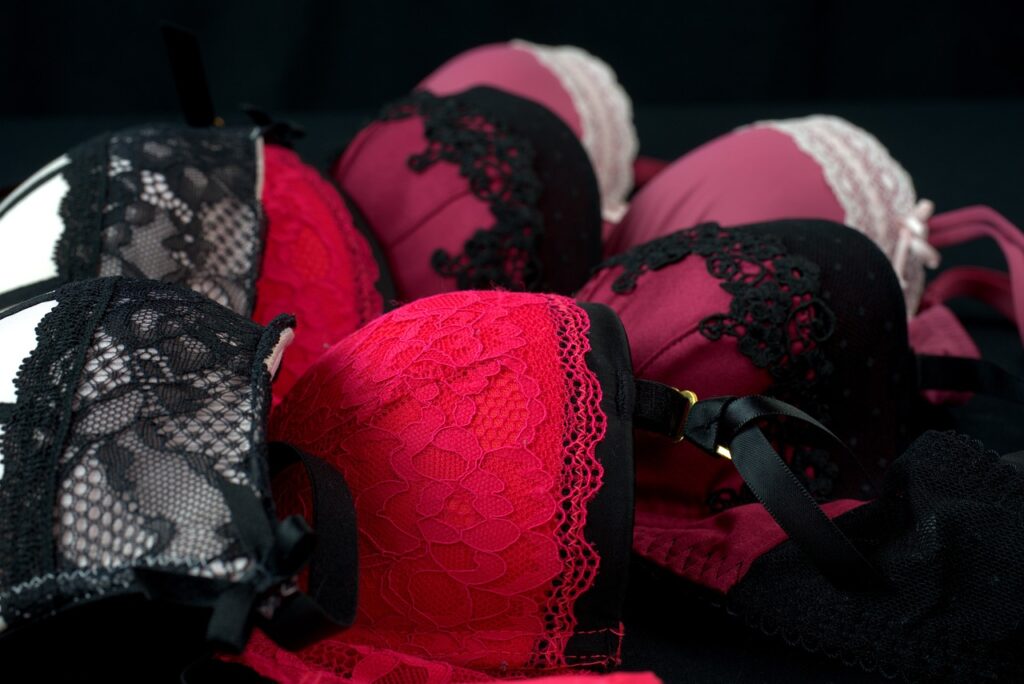
The world of royalty has always captivated us, not just for its grandeur and history, but for the subtle yet profound ways its members communicate with the public. Every appearance, every gesture, and most notably, every sartorial choice, carries weight and intention. The regal dress code itself is a testament to this, defined by its timeless elegance, luxurious fabrics, and impeccable tailoring, all designed to exude sophistication and grace. It is a style that invites individuals to embrace their inner royalty, channeling the glamour and opulence of a bygone era while often conveying messages pertinent to the present.
What makes royal fashion truly compelling, however, is not just the aesthetic appeal but the deliberate embedding of deeper meanings within their attire. From ceremonial robes to everyday accessories, members of the royal family frequently use their wardrobe as a canvas for symbolism, paying homage to predecessors, marking new beginnings, or even subtly expressing personal sentiments or political stances. These fashion statements, often initially perceived as mere aesthetic choices, transform into powerful narratives upon closer inspection, revealing layers of thought and cultural significance.
As discerning observers of high fashion and cultural trends, we delve beyond the surface, exploring these exquisite moments where clothing transcends its function to become a medium for storytelling. In this curated journey, we uncover 12 instances where royal ensembles and accessories made indelible statements, each piece a carefully chosen whisper or a resounding declaration. These are the sartorial choices that resonated far beyond the red carpet, shaping public perception and leaving an enduring legacy of style and meaning.

1. **Meghan Markle’s Symbolic Ring: A Glimmer of Freedom and Heritage** The Duchess of Sussex, Meghan Markle, has arguably ushered in a new era of royal wear with her sleek silhouettes, tailored pantsuits, and a distinct blend of Hollywood glamour and regal elegance. Her sartorial choices have consistently captured attention, and the gorgeous gown she wore to the Ripple of Hope Award Gala in New York was no exception, a stunning off-shoulder white column gown that epitomized modern sophistication. Yet, it was a particular piece of jewelry on her finger that truly sparked conversation among keen royal watchers, telling a story far deeper than mere adornment.
This striking sparkler was none other than Diana Spencer’s aquamarine ring, a piece often referred to as Diana’s “freedom ring.” The late princess had acquired this beautiful jewel in 1996, a poignant decision made to replace her iconic diamond and sapphire engagement ring, which now graces the hand of Catherine, Princess of Wales. Its presence on Meghan’s hand was therefore charged with historical resonance, connecting her to her husband’s beloved mother in a deeply personal and symbolic way.
The choice to wear such a significant piece of jewelry, particularly one so tied to Diana’s personal journey and independence, resonated powerfully as Meghan and Prince Harry continued to forge their own path away from the strictures of traditional royal life. It served as a subtle yet unmistakable declaration, signaling their commitment to autonomy and their unique vision for their future, while simultaneously honoring the enduring spirit of a woman who also carved her own destiny. The ring was not just an accessory; it was a silent, sparkling affirmation of their journey.
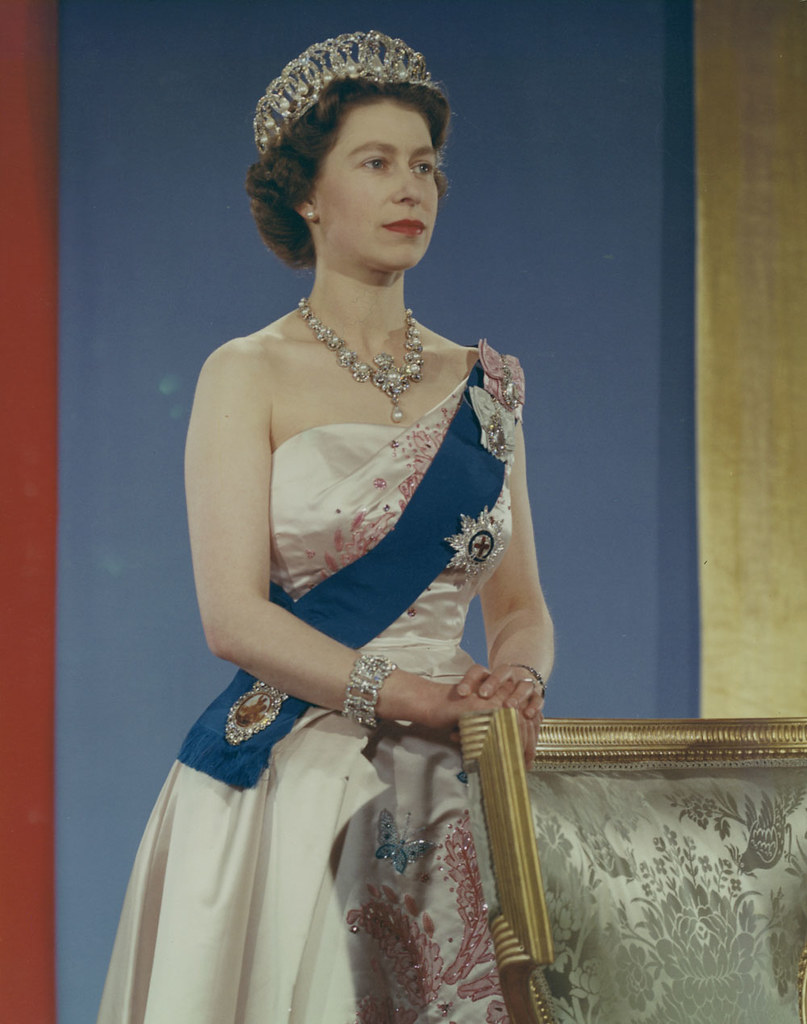
2. **Queen Elizabeth II’s Wedding Dress: A National Tapestry Woven in Silk** Our journey through royal sartorial symbolism takes us back to a pivotal moment in 1947, when then-Princess Elizabeth prepared to marry Philip Mountbatten. This was no ordinary wedding, for it occurred in a Great Britain still grappling with the devastating aftermath of World War II, a nation steeped in financial strife and in dire need of symbols of hope and renewal. The context of this historical event imbues Elizabeth’s wedding dress with an even deeper layer of meaning, making it a powerful testament to national resilience and shared experience.
In a remarkable demonstration of relatability and national solidarity, the future Queen paid for her exquisite gown using government ration coupons for clothing, a detail that brought her down to an incredibly human level in the eyes of a recovering nation. The dress itself was a breathtaking silk satin gown in ivory, a masterpiece adorned with 10,000 pearls that shimmered with ethereal elegance. Delicately embossed with intricate orange blossom and star lily embroidery, the gown was a triumph of design, taking seven weeks to construct and costing approximately $37,000 at the time.
However, it was the specific botanical choices in the embroidery that truly spoke volumes, embodying a profound message for the war-weary populace. As noted by the Royal Collection Trust, the orange blossoms and lilies were Elizabeth’s chosen symbols to represent the awakened spirit of Britain after World War II. They heralded a new beginning, not only for the newlywed couple embarking on their life together but, more broadly, for a country poised for recovery and rebirth. This wedding dress was thus more than just bridal attire; it was a national emblem of enduring hope and future prosperity.

3. **Princess Beatrice’s Handbag: A Subtle Statement for a Noble Cause** Princess Beatrice’s emergence onto the fashion landscape was notably marked by the intense public scrutiny of her and her sister Princess Eugenie’s outfits at Prince William and Princess Catherine’s wedding, a moment that, by her own admission, garnered the kind of attention most prefer to avoid. Yet, Beatrice’s journey in style was one of remarkable evolution, transforming her from a young princess exploring her look into a discerning leading lady with a refined sartorial voice. Her subsequent “fashion renaissance” showcased a growing confidence and a keen eye for meaningful detail.
Following her striking appearance at the 2018 Met Gala, where she donned a stunning royal purple ensemble, Beatrice returned to England for the prestigious Chelsea Flower Show. For this occasion, she chose a beautiful tulle dress with delicate floral detailing, perfectly complementing the garden setting. Her ensemble was thoughtfully completed with comfortable loafers and a white blazer casually draped over her shoulder, exuding an air of effortless chic. However, it was a particular accessory that drew the attention of eagle-eyed royal watchers, revealing a message far more impactful than a mere fashion trend.
She carried a Leather Box Bag from designer Pop & Suki, a piece known for its personalization options, typically embossed with a name. Princess Beatrice, however, opted for a distinctly different inscription: the phrase “Be Cool Be Nice.” This seemingly simple choice was, in fact, a subtle yet powerful tribute to the anti-cyberbullying campaign of the same name. Her handbag, therefore, transcended its function as an accessory, becoming a personal statement of support for a crucial social cause, reflecting a princess committed to using her platform for positive change.
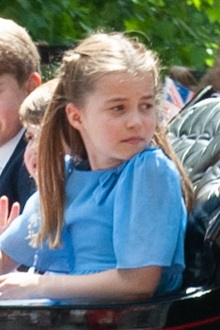
4. **Princess Catherine’s Postpartum Ensembles: Echoes of a Beloved Legacy** Just as royal weddings are moments of immense public celebration, the arrival of a new royal baby invariably ignites widespread joy and anticipation. When Princess Diana and then-Prince Charles welcomed Princes William and Harry, Great Britain collectively rejoiced, embracing the new additions as if they were their own. This powerful legacy was undoubtedly at the forefront of Catherine, Princess of Wales’s mind as she prepared to present her own children – Prince George, Princess Charlotte, and Prince Louis – to the world. She made a conscious effort to select meaningful wardrobe pieces for these momentous occasions.
Upon her first appearance outside the Lindo wing of St. Mary’s Hospital with her eldest, Prince George, Catherine chose a short-sleeved blue dress adorned with subtle polka dots, a design by Jenny Packham. This choice was far from arbitrary; it was a touching and deliberate nod to Princess Diana, who, decades earlier, had also worn a polka-dotted dress when she first emerged from the hospital with a newborn Prince William. In this moment, Catherine not only radiated the joyous glow of new motherhood but also gracefully acknowledged the enduring connection to her late mother-in-law, bridging generations through a shared sartorial language.
This thoughtful tradition continued with the birth of Prince Louis. Once again, Catherine stepped out from St. Mary’s, greeting fans and cameras in a striking red dress featuring a prominent white collar. This ensemble was an unmistakable echo of the dress Diana wore when leaving the same wing with a baby Prince Harry. Through these meticulously chosen outfits, Princess Catherine undeniably demonstrated her heartfelt intention to involve the late princess’s memory and legacy in the significant milestone of welcoming her own children into the world, weaving Diana’s spirit into the fabric of new beginnings.

5. **Sarah Ferguson’s Generational Handbag: A Touching Heirloom** The 1980s heralded a particularly vibrant and intriguing era for the British Royal Family, marked by the high-profile weddings of Prince Charles and Princess Diana in 1981, swiftly followed by Prince Andrew and Sarah “Fergie” Ferguson’s nuptials in 1986. Both Diana and Fergie, as spirited newcomers, infused the monarchy with a renewed sense of youth and vitality, captivating the press and the public alike with their distinct personalities and burgeoning styles. While Diana and Charles’s wedding was hailed as the “ceremony of the century,” Fergie and Andrew’s union was also celebrated with immense enthusiasm and public fervor.
On the joyous occasion of their wedding day, Andrew and Fergie’s families converged to witness the union, which, though ultimately short-lived, was a moment of profound public and private significance. Susan Barrantes, Fergie’s mother, was among the elegantly dressed attendees, looking lovely in an ensemble that showcased designer choices. As noted on the royal family’s official website, Barrantes carried a distinguished Manolo Blahnik bag, a piece of high fashion that was not merely an accessory but one that would quietly endure within the family for decades.
The true poignancy of this particular fashion statement unfolded years later, at the 2018 wedding of Andrew and Fergie’s daughter, Princess Eugenie, to Jack Brooksbank. As the proud mother of the bride, Sarah Ferguson made a deeply touching sartorial choice: she carried her *own* mother’s Manolo Blahnik bag. This beautiful gesture was more than just a nod to family history; it was a sweet, sentimental acknowledgment of her new role as a mother-in-law, a role her own mother, Susan Barrantes, had first embodied in 1986. It was a subtle yet powerful link across generations, a treasured heirloom carrying forward a legacy of love and family connection.

6. **Queen Elizabeth II’s Wedding Day Attire: A Colorful Message of Hope** Queen Elizabeth II was globally renowned for her consistently vibrant attire, a distinctive sartorial signature that ensured she was always visible in any crowd, a beacon of royal presence. It is a well-established understanding, deeply rooted in various traditions and cultures, that colors are imbued with significant, often hidden, meanings. On the highly anticipated day of Prince Harry and Meghan Markle’s wedding, the late monarch’s choice of outfit was particularly striking, speaking volumes through its carefully selected hues and elegant design.
For this momentous occasion, as Good Housekeeping meticulously reported, Queen Elizabeth opted for a brilliant lime green dress and coordinating coat, exquisitely designed by Stuart Parvin. She complemented this vivid ensemble with artfully integrated purple and gray accessories, presenting a picture of regal elegance and poised anticipation. However, beyond the aesthetic appeal, the specific colors chosen by Her Majesty were, according to interpretations, indicative of her true feelings and profound hopes for the union, communicating a message of optimism for the royal family’s future.
June McLeod, an authoritative voice in Color Psychology Today, conveyed to Good Housekeeping that the Queen’s color palette for Harry and Meghan’s wedding was indeed “packed with hidden meaning.” The prominent use of green, as McLeod detailed, symbolizes “growth and rebirth” and is worn by those who are “regulator and open-hearted.” She further elaborated that “Green is a highly significant color worn as a sign of respect and intention for the future,” suggesting the Queen’s profound well-wishes and forward-looking perspective for the couple. The complementary pops of purple, McLeod added, are a “proud color,” symbolizing “cleansing” and indicating “a passion for creativity.” Together, these colors articulated a silent, yet potent, message of hope, respect, and a visionary outlook for the new chapter in the royal narrative, embodying the Queen’s profound support and optimistic spirit for Harry and Meghan’s marriage.
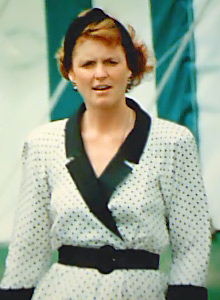
7. **Sarah Ferguson’s Wedding Dress: An Ode to a Royal Union**When we recall iconic royal wedding gowns, some instantly come to mind for their grandeur and historical impact. Yet, amidst these celebrated designs, Sarah Ferguson’s wedding dress, worn when she married Prince Andrew in 1986, often feels undeservedly overlooked. Far from being a simple bridal confection, this gown was a deeply personal tapestry, meticulously woven with intentional details that transformed it into a unique narrative of her relationship and family, making it truly one of a kind.
Designed by the talented Lindka Cierach, the dress was not merely beautiful; it was a canvas for intricate beadwork that spoke volumes. Fergie, with a keen eye for personal touches, ensured her family’s heritage was subtly embedded within the design. The Los Angeles Times noted the incorporation of her family’s coat of arms, specifically featuring delicate bees and thistles, symbols that resonated with her personal lineage and added a layer of intimate significance to her grand public moment.
To honor her fiancé, Prince Andrew, and his distinguished military career, Fergie thoughtfully had waves and anchors embroidered onto the expansive train of her gown. These maritime symbols were a direct tribute to his service, a silent acknowledgment of his profession and commitment. In a charmingly personal touch, a prominent ‘A’ was also seamlessly integrated into the design, subtly signifying her beloved husband-to-be, marking the union with an unmistakable dedication.
The personalization extended to Fergie herself, with four elegant ‘S’ letters embroidered onto the bodice, representing her own name, Sarah. This meticulous attention to detail allowed these hidden motifs to exist without appearing overt or obvious, elevating the dress from a mere garment to a cherished piece of storytelling. Completing her bridal look, Fergie initially wore a flower crown during the ceremony, later unveiling the majestic York Diamond Tiara, a piece commissioned by Queen Elizabeth II herself, thus blending personal sentiment with regal splendor.
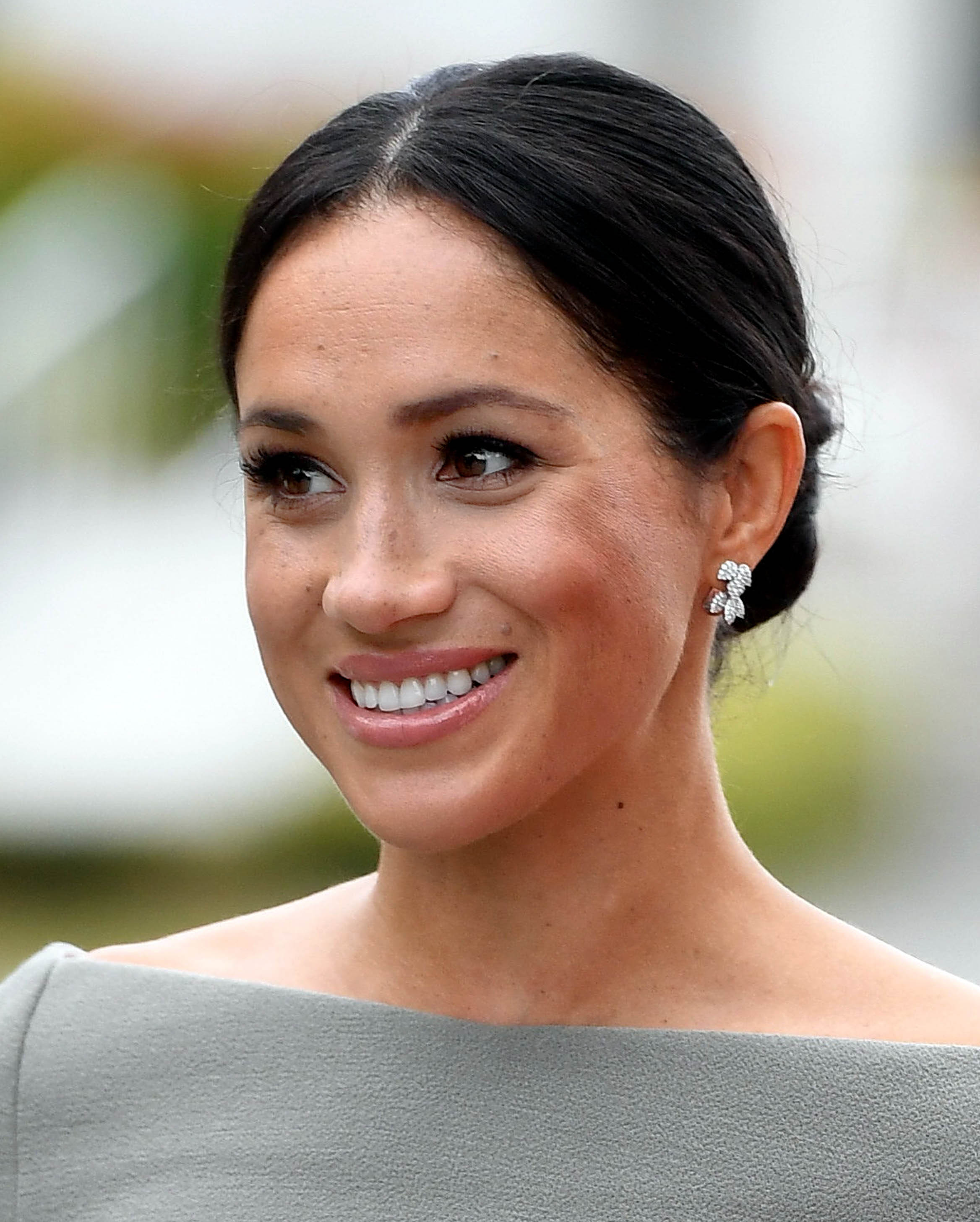
8. **Meghan Markle’s Wedding Accessories: A Global Message in Every Stitch**Prince Harry and Meghan Markle’s 2018 wedding captured the imagination of the entire world, a dazzling spectacle that saw a British prince marry an American actor, symbolically uniting two distinct worlds. In preparing for this monumental occasion, Meghan’s approach to her bridal attire was deeply thoughtful, infused with a desire to honor both the rich traditions of the family she was joining and her own unique perspective. While her dress, simple and elegant, garnered much admiration, it was the intricate details of her accessories that truly veiled a special, global message.
The most striking of these was her magnificent veil, a creation by designer Waight Keller. As detailed on the royal family’s official website, the veil was adorned with the local flowers of each of the 53 Commonwealth countries. This intricate appliqué work, lining the edges of the expansive veil, was far more than decorative; it was a clear and profound representation of Meghan’s respectful nod to Great Britain and, crucially, to the wider global community represented by the Commonwealth. It underscored her embrace of her new international role from the very outset of her royal journey.
This choice took on even deeper meaning when considered alongside Prince Harry’s recent appointment. Shortly before the wedding, Harry was made an ambassador of Commonwealth Youth, a role dedicated to fostering connections and progress among young people across these nations. Meghan’s symbolic incorporation of the Commonwealth flowers into her wedding day ensemble thus served as a heartfelt tribute to her new husband’s charity initiatives and his commitment to a global cause, aligning her personal style with their shared public purpose.
The veil itself was secured with Queen Mary’s diamond bandeau tiara, a breathtaking piece lent to Meghan by the Queen for the momentous day. This particular tiara, made in 1932, held its own layer of historical depth, as its exquisite centerpiece dated all the way back to 1893. Through these meticulously chosen accessories, Meghan Markle’s wedding day look transcended mere fashion, becoming a powerful statement of global unity, personal commitment, and a profound respect for tradition, all while embracing a forward-looking vision for her new life within the monarchy.
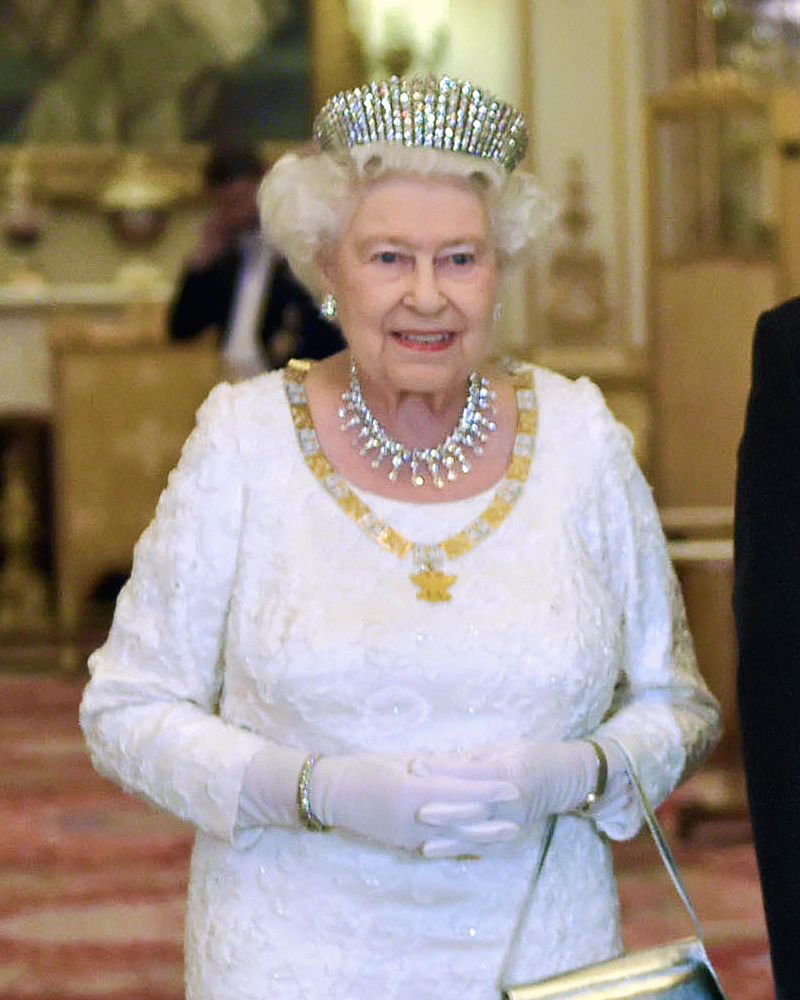
9. **Queen Elizabeth II’s Gloves: A Regal Protocol of Protection and Poise**When we consider the sartorial choices of modern royals, a distinct difference emerges between those who consistently wore gloves and those who opted not to. Queen Elizabeth II was unequivocally in the former category, with her white gloves becoming as synonymous with her image as her vibrant outfits and classic black handbag. This choice, seemingly simple, was in fact a deliberate act of royal protocol, maintaining a warm yet dignified distance from her subjects. It stood in contrast to Princess Diana, for instance, who famously forewent gloves to foster a more direct, human connection through touch with the public.
Beyond the aesthetic of formality, one primary and highly practical reason for the late monarch’s consistent glove-wearing was, quite literally, germ protection. As noted by Express, concerned about her health amidst an incredibly demanding schedule, the Queen wore white gloves while on public engagements. This provided a crucial layer of protection, particularly while shaking countless hands and greeting people, minimizing her exposure to illnesses. For a monarch with such a vital role and packed diary, safeguarding her health was an understandable priority.
Secondly, the Queen’s gloves represented a profound sense of continuity and unwavering tradition. She began wearing pairs from the esteemed glove designer Cornelia James all the way back in 1947, a practice she maintained faithfully throughout her reign. This lifelong allegiance to a particular style and maker underscored her steadfastness and adherence to established royal customs, projecting an image of unwavering stability in an ever-changing world.
Indeed, as Express further elaborated, Queen Elizabeth’s gloves became an extension of her very persona. Much like her iconic black handbag and her vividly colored outfits, each accessory played a vital role in crafting the public image of the monarch. They helped present her as the balanced, approachable, yet undeniably regal ruler that the world came to know and admire over her seven-decade reign, embodying a unique blend of practical necessity and symbolic grace.
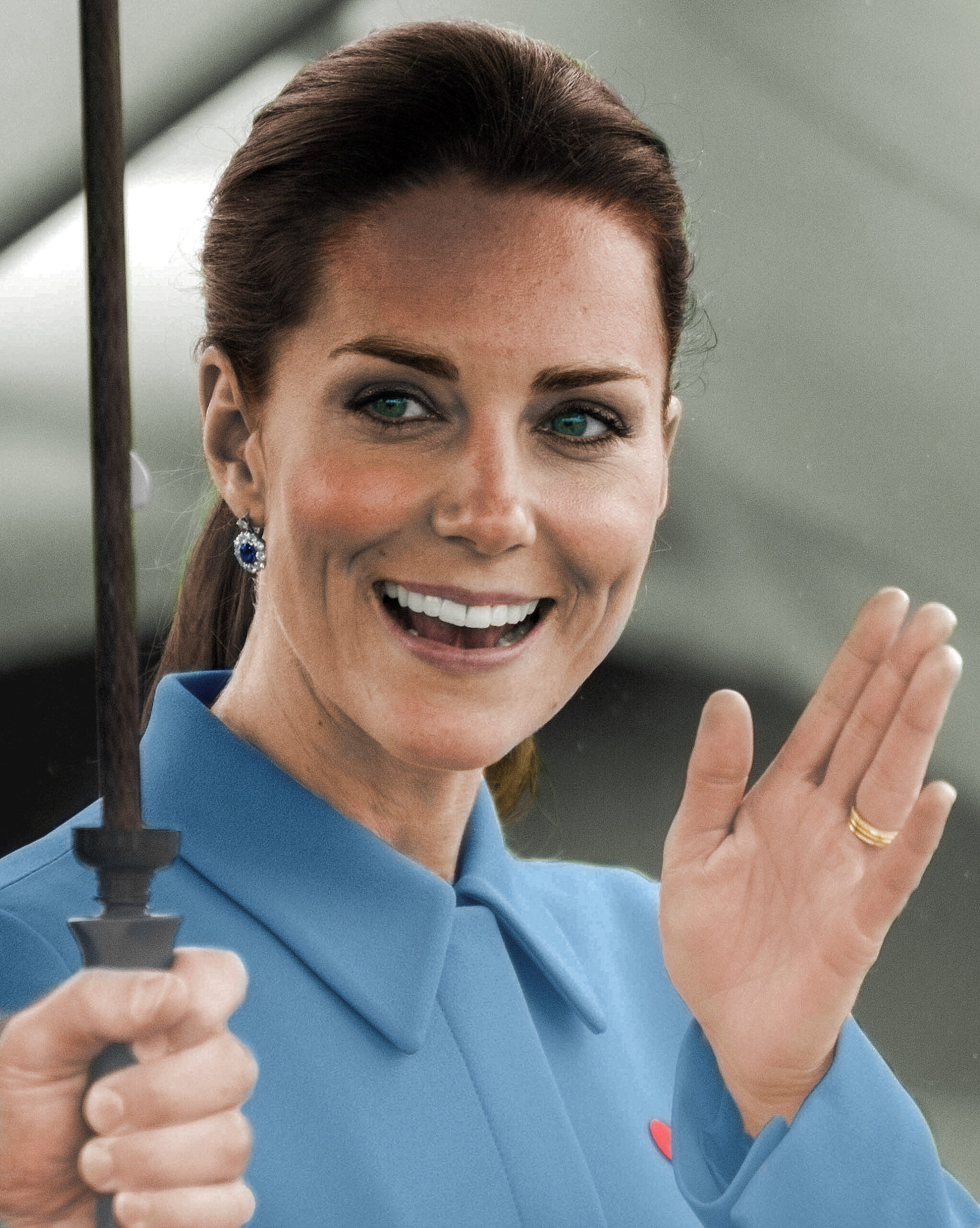
10. **Princess Catherine’s Dress on Diana’s Anniversary: A Floral Tribute**It is a remarkable and somewhat poignant thought that Princess Catherine, despite her numerous sartorial homages to Princess Diana, never had the opportunity to meet her late mother-in-law. Yet, an undeniable and almost mystical link connects them, particularly now that Catherine holds the revered title of Princess of Wales. This shared public role and title have inextricably merged their images in the public eye, fulfilling a narrative few could have predicted. With this profound connection in mind, Catherine’s dress choice to honor Diana on the 20th anniversary of her tragic death was imbued with subtle yet deeply meaningful symbolism.
On this solemn occasion, Catherine joined Prince William and Prince Harry at a memorial garden, a moment of quiet reflection to pay tribute to their beloved mother. For the event, the then-Duchess of Cambridge selected a truly beautiful tea-length dress from Prada. The garment featured elegant long sleeves and a sophisticated high neckline, showcasing a refined and respectful aesthetic. However, it was the intricate floral pattern adorning the dress that held the most poignant hidden message, a silent conversation with Diana’s enduring legacy.
Within that delicate floral design, poppies were a prominent motif. As InStyle astutely noted, poppies hold a significant and deeply cherished meaning in Great Britain, where they are traditionally utilized to honor those who have passed away. Catherine’s choice to incorporate this particular flower into her ensemble was therefore a profound and respectful gesture, directly acknowledging the solemnity of the anniversary and commemorating Diana’s life with a universally understood symbol of remembrance and reverence.
The thoughtful tributes continued with the dress’s design itself, which was brought together with a pussy bow neckline. This specific design style was, notably, a favorite of Diana’s, further weaving her spirit into Catherine’s chosen attire for the commemoration. While Catherine has on other occasions directly replicated some of Diana’s iconic looks, it is these subtle, deeply personal, and symbolically rich tributes that often resonate most powerfully, speaking volumes without uttering a single word, honoring a beloved figure through the enduring language of fashion.
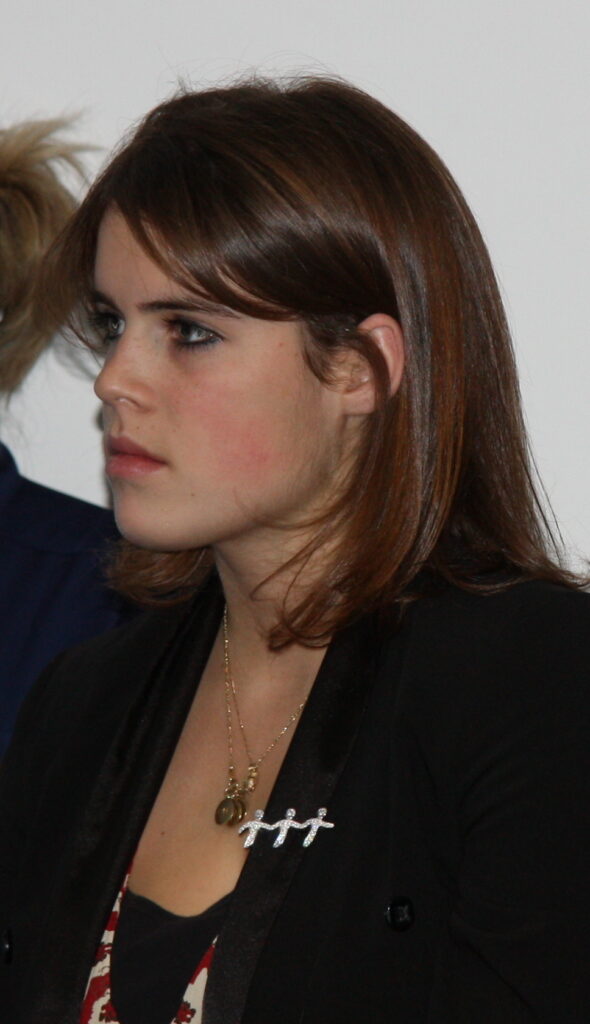
11. **Princess Eugenie’s Wedding Dress: A Visible Mark of Resilience**When Princess Eugenie stepped out for her wedding to Jack Brooksbank, royal watchers and fashion critics alike were absolutely floored by her bridal gown. Having been relatively known for some past fashion choices that garnered public scrutiny, Eugenie truly stunned on her big day, radiating elegance and confidence. As noted by the royal family’s official website, her exquisite dress was a creation by Peter Pilotto and Christopher De Vos of the British designer label Peter Pilotto, marking a memorable moment in royal bridal fashion.
The gown featured a gorgeously fitted corset top paired with an elegant off-the-shoulder neckline, a silhouette that perfectly framed her décolletage. The bodice gracefully flowed into a full skirt with delicate pleated detail, creating a classic princess-like aesthetic. However, it was the back of the dress that scooped into a striking low V-shape that truly captivated and carried a profound personal narrative, making her choice incredibly powerful and poignant.
This specific low-back detail was no mere design whim; it was a deliberate and deeply meaningful choice on Eugenie’s part. As a child, she had suffered from scoliosis and, at just 12 years old, underwent corrective surgery. For her wedding day, Eugenie specifically chose a gown that would not conceal her scar, but rather proudly display it. This bold decision transformed her dress into a personal statement of strength and acceptance.
Eugenie herself articulated the profound significance of her choice, stating, ‘I had always wanted a low back, part of it was showing my scar,’ as quoted via royal.uk. She further elaborated on her philosophy: ‘I believe scars tell a story about your past and your future and it’s a way of getting rid of a taboo.’ In this act, the bride became a beacon of elegance and resilience on her significant day, using her gown to inspire and to challenge societal perceptions of physical imperfections, making a truly unforgettable statement through her choice.
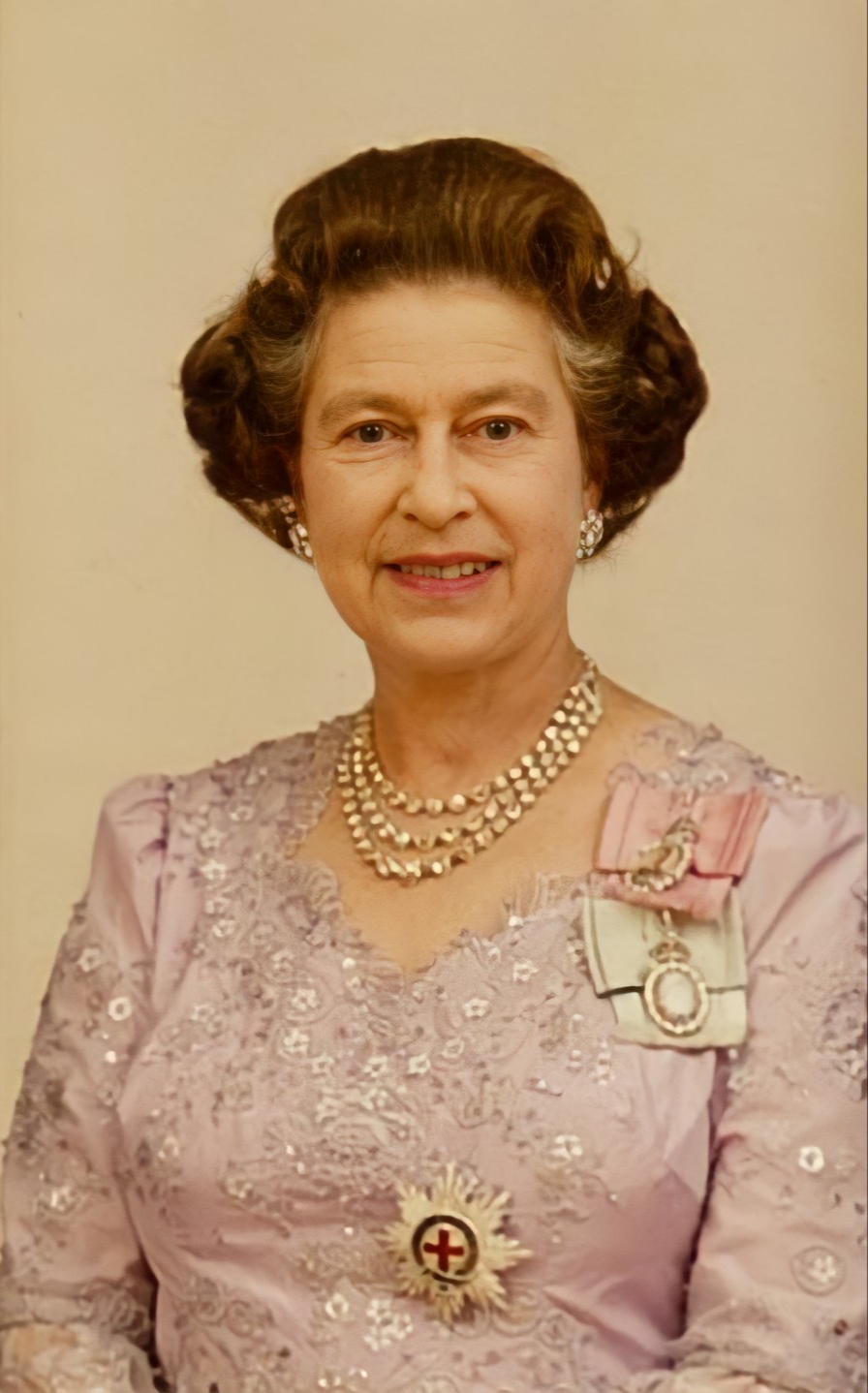
12. **Queen Elizabeth II’s Brooches: Silent Diplomat in Jewels**For any astute royal watcher, the understanding is clear: the monarch of the British royal family is expected to remain strictly politically neutral. The late Queen Elizabeth II was globally renowned for her consistently balanced and impartial approach to most matters, and particularly so when it came to political affairs. However, during a specific visit from then-President Donald Trump and former First Lady Melania Trump, the Queen subtly yet definitively allowed her accessories to convey messages that she, by protocol, could not verbally express.
Upon their first day in the United Kingdom, the Trumps met with the late monarch, who appeared wearing a green brooch. For many, this might seem an innocuous detail. Yet, as noted by The Guardian, this particular brooch held significant meaning: it had been a gift to the Queen from former President Barack Obama and former First Lady Michelle Obama, commemorating their friendship. This choice was perceived by many as a subtle yet pointed ‘strike one,’ subtly signaling the Queen’s sentiment during the visit.
On the second day of Trump’s visit, the Queen once again made a deliberate choice with her jewelry. She donned a brooch that had been gifted to her by Canada, a prominent Commonwealth country. At that time, the then-President was engaged in public disagreements with Canada, creating a palpable diplomatic tension. The monarch’s choice did not go unnoticed, registering as a distinct ‘strike two’ in her quiet, gem-laden commentary on the political climate.
For the final day of the then-President’s visit, Queen Elizabeth completed her silent diplomatic trilogy. She wore a very somber piece of jewelry – a brooch that her revered mother, The Queen Mother, had worn when attending King George VI’s funeral. This final, poignant selection was widely interpreted as a profound ‘strike three.’ In these instances, the Queen certainly seemed to allow her exquisite jewelry to speak volumes, articulating sentiments and observations that would have been entirely out of the question for her to comment on directly in her politically neutral role.
As we conclude this curated journey through the annals of royal fashion, it becomes abundantly clear that these garments and jewels are far more than mere adornments. They are rich tapestries woven with history, personal narratives, and powerful public statements, each piece acting as a silent, yet resonant, ambassador for the wearer and the institution they represent. From discreet tributes to bold declarations of individuality and diplomacy, royal attire consistently transcends its functional purpose to become an enduring language of symbolism. These meticulously chosen ensembles and accessories not only reflect the times in which they were worn but also leave an indelible legacy, influencing perceptions and shaping narratives for generations to come. They stand as a testament to the enduring power of style, elevated to the highest form of regal communication, perpetually fascinating and profoundly influential.

